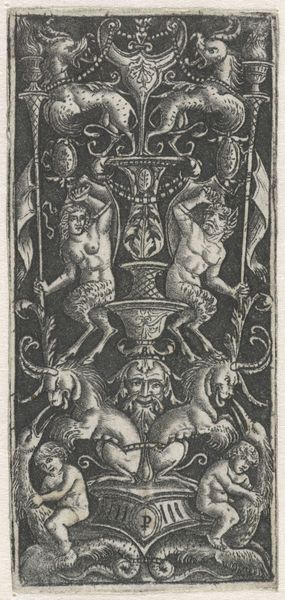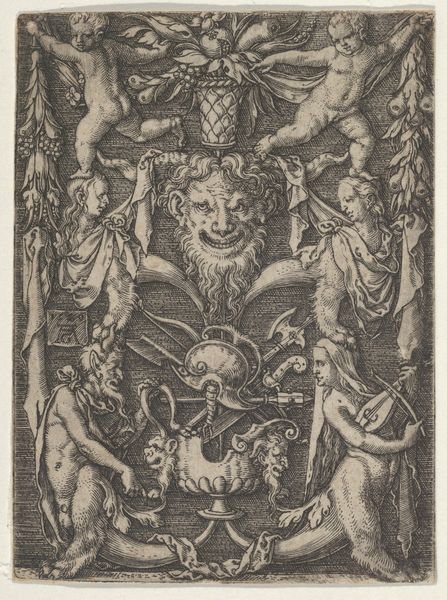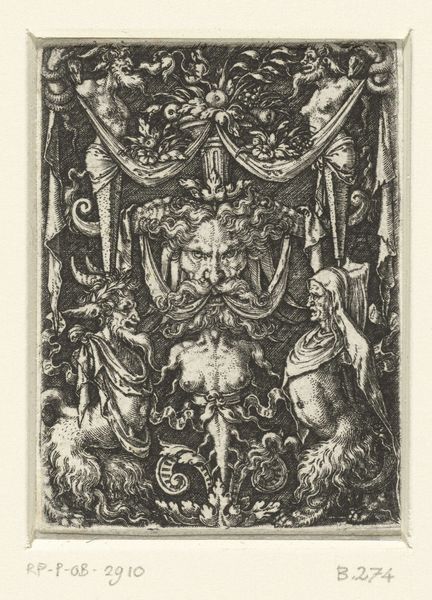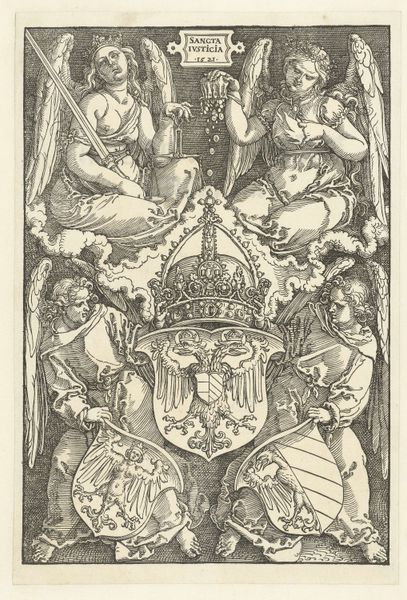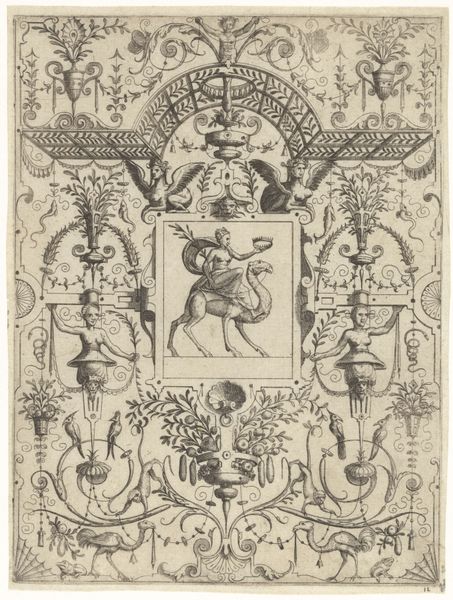
Panel of Ornament with Two Naked Children on Monstrous Beasts c. 1505 - 1520
0:00
0:00
drawing, ornament, print, intaglio, ink, engraving
#
drawing
#
ornament
#
allegory
#
pen drawing
# print
#
intaglio
#
pencil sketch
#
figuration
#
11_renaissance
#
ink
#
italian-renaissance
#
nude
#
engraving
Dimensions: sheet (trimmed within plate mark): 7.3 x 3.3 cm (2 7/8 x 1 5/16 in.)
Copyright: National Gallery of Art: CC0 1.0
Curator: This striking engraving is titled "Panel of Ornament with Two Naked Children on Monstrous Beasts" and it was created circa 1505-1520 by Peregrino da Cesena. Look at the sheer density of detail. What's your initial impression? Editor: Chaotic and a bit unsettling. All those hybrid creatures – part human, part animal. It’s as if the Renaissance fascination with classical forms collided with a darker, more primal vision. The contrast is visually jarring. Curator: Precisely! This piece showcases the Renaissance interest in ornamentation and the grotesque. The creatures may appear jarring to us now, but they reflect a specific cultural understanding of the boundary between the natural and supernatural, human and animal. Notice the strategic symmetry in the image’s design. Editor: Symmetrical, yes, but in a way that emphasizes a rigid social structure, wouldn’t you say? Two naked children literally riding these "monstrous beasts," it reflects power imbalances – who is considered civilized and who is beastly? Curator: That is a provocative way to interpret the image, but what if we looked at it as a representation of nature tamed? The monsters, although frightening, are controlled, made to serve as ornamentation. The children could signify innocence mastering base instincts. Editor: Perhaps, but these sorts of images often masked power dynamics. Think of colonial narratives that portrayed the “civilizing” influence of Europe on supposedly wilder cultures. Even in ornament, these underlying themes persisted. Curator: I see your point. Ornamentation, often viewed as mere decoration, becomes another layer of complexity. It invites us to examine hidden ideologies in plain sight, so to speak. Editor: Definitely. And how those visual codes impact the stories that get told… whose voices are centered and whose are marginalized. It really is fascinating when you view a work as this in terms of broader patterns of domination, from back then and influencing the present day. Curator: I've found this Renaissance panel really has me thinking about how deeply ingrained cultural symbols are, how images accumulate and transfer knowledge, biases, and beliefs over long periods. Editor: Indeed, and how art, even seemingly innocuous decorative art, acts as both a mirror and a constructor of our shared realities. Always offering so many opportunities to view our history with criticality.
Comments
No comments
Be the first to comment and join the conversation on the ultimate creative platform.
